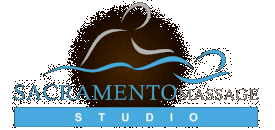The QL Factor
Strengthening, Stretching, and Soothing Techniques for QL Muscle Pain Relief
When it comes to core muscles, the abs and obliques tend to take the limelight. But in the shadows, an unsung hero tirelessly works to keep us upright, balanced, and moving: the Quadratus Lumborum (QL). This lesser-known, powerhouse muscle plays a vital role in our body mechanics, and can often be the secret culprit behind that nagging QL Muscle Pain.
The QL: An Introduction
Situated deep in your lower back on either side of the spine, the QL is a key part of your posterior chain – the muscles responsible for keeping you upright. The QL extends from the lowest rib down to the top of the pelvis, forming a quadrilateral shape – hence the name.
What’s the QL’s day job? This ‘workhorse’ of a muscle is involved in side-bending and hip hiking, stabilizing the spine while we move our upper body, and assisting in breathing. But like any unsung hero, it often goes unnoticed until something goes wrong.
Why the QL Goes Rogue
The QL can cause trouble when it gets tight or strained. This often happens due to a lifestyle imbalance. Think one-sided sports like golf and baseball, or work that involves uneven loads like a mail carrier with a heavy bag on one side. Dentists, who often lean to one side while working, can also be victims of QL tension.
Sedentary workers aren’t exempt either. Long periods of sitting – particularly with poor posture – can lead to a tight QL. Furthermore, those with a weak core often unknowingly rely more heavily on their QL for stability, leading to overuse and discomfort.
The Power of QL Stretches and Exercises
Just as the QL can cause trouble, it can also provide solutions. Regularly stretching and strengthening this muscle can alleviate QL Muscle Pain and prevent future issues. Here are some exercises to add to your routine:
- QL Stretch: Lie on your back with your feet flat on the floor. Keep one foot flat while gently bringing the other knee towards the chest. The aim is to create a stretch in the lower back. Repeat on both sides.
- Side Plank: This popular exercise is excellent for strengthening the QL. Ensure your elbow is directly below your shoulder, and your body forms a straight line from head to feet. Hold for 30 seconds, then switch sides.
- Bird Dog: This exercise helps promote balance and stability. On your hands and knees, extend one arm and the opposite leg, keeping the spine neutral. Switch sides and repeat.
Remember, it’s essential to do these exercises with good form and engage your core muscles. It’s always a good idea to consult with a fitness professional to ensure proper technique.
The Magic of Massage
Now, let’s bring massage into the mix. Massage therapy can be particularly effective in alleviating QL discomfort. It helps relax the muscle, increasing blood flow, and aiding recovery.
Deep tissue massage or trigger point therapy can target the QL directly, relieving tension and promoting flexibility. Incorporating this type of massage into a monthly routine can be a game-changer for QL health.
The Benefits of Regular Massage
The stress and strain of our daily lives can lead to chronic muscle tension, often concentrated in the QL. Regular, monthly massages can provide substantial benefits:
- Improved Mobility: Massage therapy can help lengthen and relax the QL muscle, improving mobility and reducing the risk of strains or injuries.
- Pain Relief: Massage can help reduce muscle tension and inflammation, providing relief from the discomfort associated with QL Muscle Pain.
- Better Posture: Regular massage can help improve posture by alleviating muscle imbalances, which often contribute to poor alignment.
- Stress Reduction: The soothing nature of massage can also help reduce stress, a common trigger for muscle tension.
Whether you’re a golfer, a dentist, a desk jockey, or just someone looking to improve their overall well-being, paying attention to the QL can be a pivotal piece of the puzzle.
The QL might not have the fame of the abs or the glutes, but as we’ve seen, it plays a crucial role in our movement and comfort. So here’s a shout-out to this unsung hero – may we all stand a little taller and breathe a little easier, thanks to the mighty Quadratus Lumborum!
Other articles you might also be interested in: How to Relieve Hamstring Pain in 10 Minutes or Less
Check out our reviews on Yelp!
Tag: QL Muscle Pain

